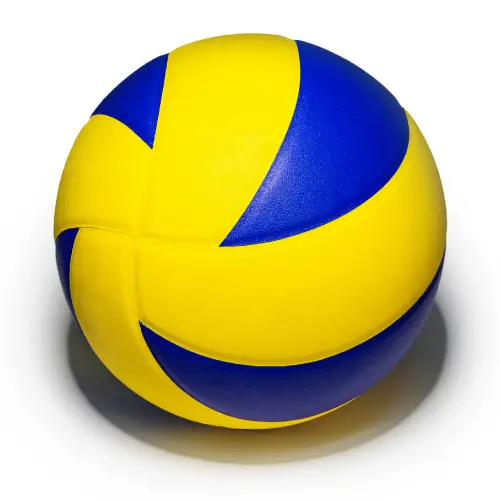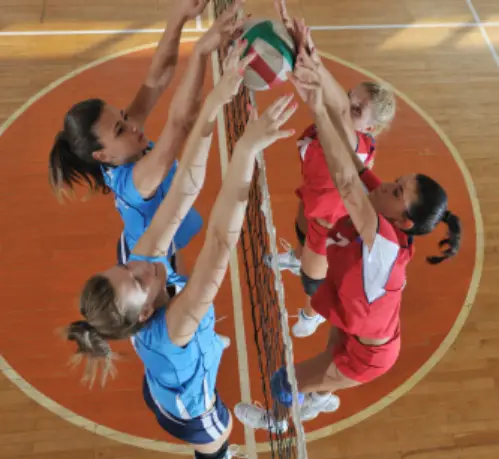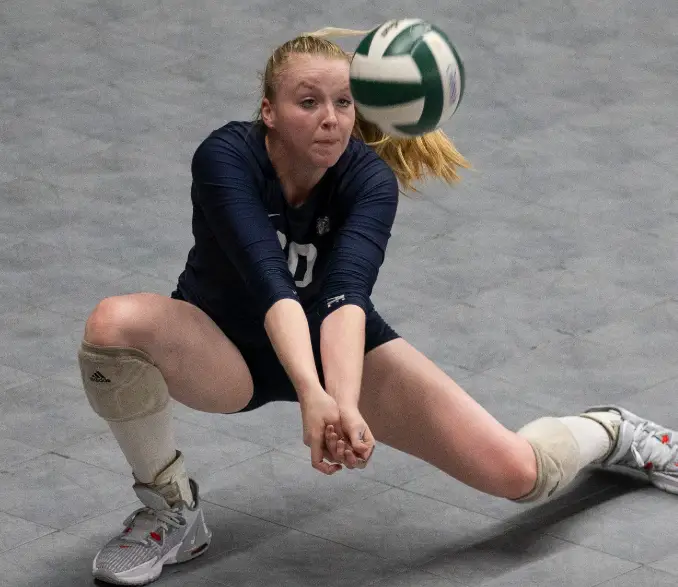Volleyball is a team sport that requires a lot of skill and technique to master. One of the essential skills that every volleyball player should know is how to dig. A volleyball dig is the act of stopping a spiked or hard hit ball from the opponent’s side and sending it back up to your team. This maneuver requires quick reflexes, good ball control, and the ability to read the opponent’s attack.
In this article, we will discuss the different types of volleyball digs and give tips on how to improve your skills in this area.
What is a Volleyball Dig?
A volleyball dig is one of the basic skilled used in volleyball. Defensively, it’s the process of preventing the ball from hitting the ground after an attack from the other team. Volleyball digs usually happen when an opponent attacks the ball and sends it over the net in an attempt to score points. Players should prevent the ball from landing on their side of the court.
Why is Volleyball Dig Important?
The volleyball dig is an essential skill that helps to keep the play alive, giving your team a chance to score. It is also an excellent defensive strategy against the opposing team’s spike attacks, which could earn them points. Any team that masters the dig technique will have an enormous advantage over the other team, and The 6 Different Types of Volleyball Digs
Different Types of Volleyball Digs
1. The Forearm Pass or Bump
The forearm pass is the most common type of volleyball dig and is used to receive hard-hit balls aimed at the midsection or chest area. Here’s how to perform a forearm pass:
a. Stand with your legs shoulder-width apart and bend your knees slightly.
b. Hold your arms out in front of you with your elbows slightly bent.
c. Form a platform by placing your hands together, forming a triangle shape with your thumbs and index fingers.
d. When the ball approaches, move forward and meet the ball with your platform, absorb the ball’s impact, and direct it to your setter.
2. The One-Handed Volleyball Dig
The one-handed dig is a type of dig that is useful when the opponent sends a ball low to the ground. This technique requires quick reflexes and good reaction times. Here are the steps:
a. Stand with feet shoulder-width apart and knees slightly bent.
b. Extend your hand towards the ball and spread your fingers apart.
c. When the ball approaches, use your fingers to deflect it upward and towards your teammates.
3. The Dive
The dive is a volleyball dig technique for when the opponent sends a ball far from your reach. While diving on the court, you can redirect the ball back to your teammates. Here’s how to do it:
a. Run towards the direction of the ball, bending your knees and lowering your torso.
b. Reach and stretch out the arm nearest to the ball.
c. Allow your feet to slide out from under you as you fall on the court.
d. Push the ball upward with your arm as you land on the court.
4. The Block Volleyball Dig
Block volleyball dig happens when the hitter has their shot blocked, but the ball is still on your side of the court. Here’s how to execute this technique:
a. Stand at the net with the intention to block your opponent’s shot.
b. Once the ball lands on your side, react to it quickly and redirect it upward to your setter or hitter.
5. Overhead Dig or The Joust Volleyball Dig
The overhead dig is one of the volleyball dig techniques that require good timing and strength. Here’s how to do it:
a. When the ball is coming over the net, watch closely as the attacker approaches to strike.
b. Stand with arms straight and fingers spread apart.
c. As the ball comes close, use both hands to push it upward and towards your teammates.
6. The Roll Volleyball Dig
The rolling dig is used when the opponent hits a sharp, low ball that is difficult to pass, but close to the net. Here’s how to do it:
a. Approach the ball and contact it with your forearms.
b. Roll over onto your side as you still touch the ball.
c. Use your other hand to adjust the ball’s trajectory towards your teammates.
Tips for Improving Your Volleyball Dig
To master the art of digging, players need to practice the different dig techniques. Here are some tips for sharpening your volleyball dig skills:
1. Improve on your ball control: To improve your ball control, practice passing drills with your friends or teammates. Do this repeatedly and focus on accuracy and speed.
2. Increase strength and quick reflexes: Volleyball digs require quick reactions that can only be achieved if you regularly train. Work on building your strength, speed, and agility to increase your reaction times.
3. Communicate: One of the secrets of a good dig is excellent communication between teammates. Talk to your teammates, especially your setter, so that you can direct the ball to them with accuracy.
4. Maintain proper body positioning: Maintain a low and balanced center of gravity to stay in control on the court. Keeping good posture is crucial for good ball control.
5. Practice different types of digs: Practice different types of digs in different situations so you can improve on your reaction time and skills. You will be better equipped to handle different shots.
6. Anticipate the ball: Anticipation is key when it comes to getting your hands on the ball. Be alert and focus on the attacker to time your move correctly.
Conclusion
In summary, volleyball digs are essential, game-changing techniques that every player should learn. Knowing how to dig increases your chances of winning games and makes you a valuable asset to your team. The six different types of volleyball digs we have highlighted in this article are just the beginning; there are many other variations out there. Keep practicing and improving your technique, and you’ll be able to dig just about any shot that comes your way.







